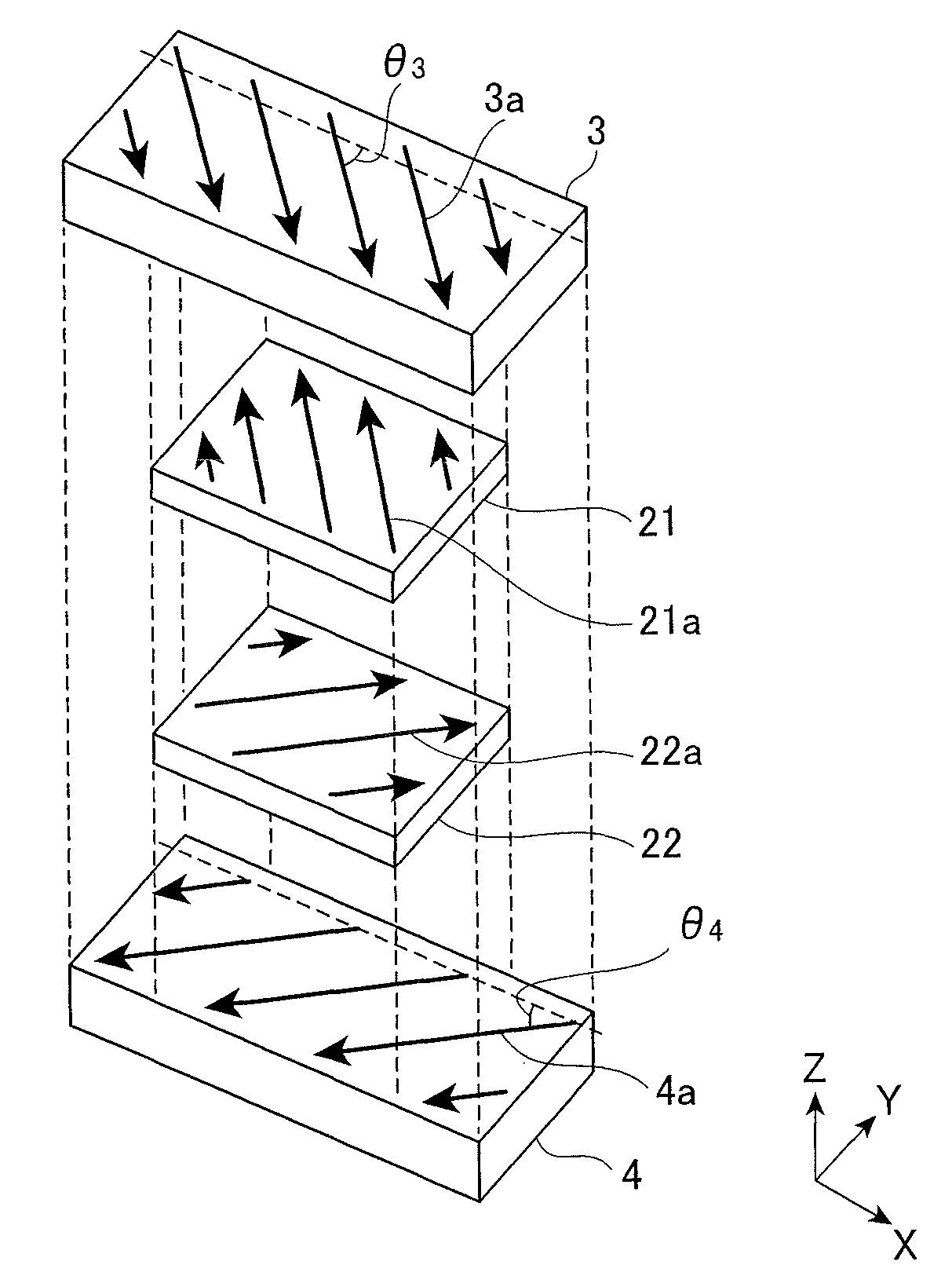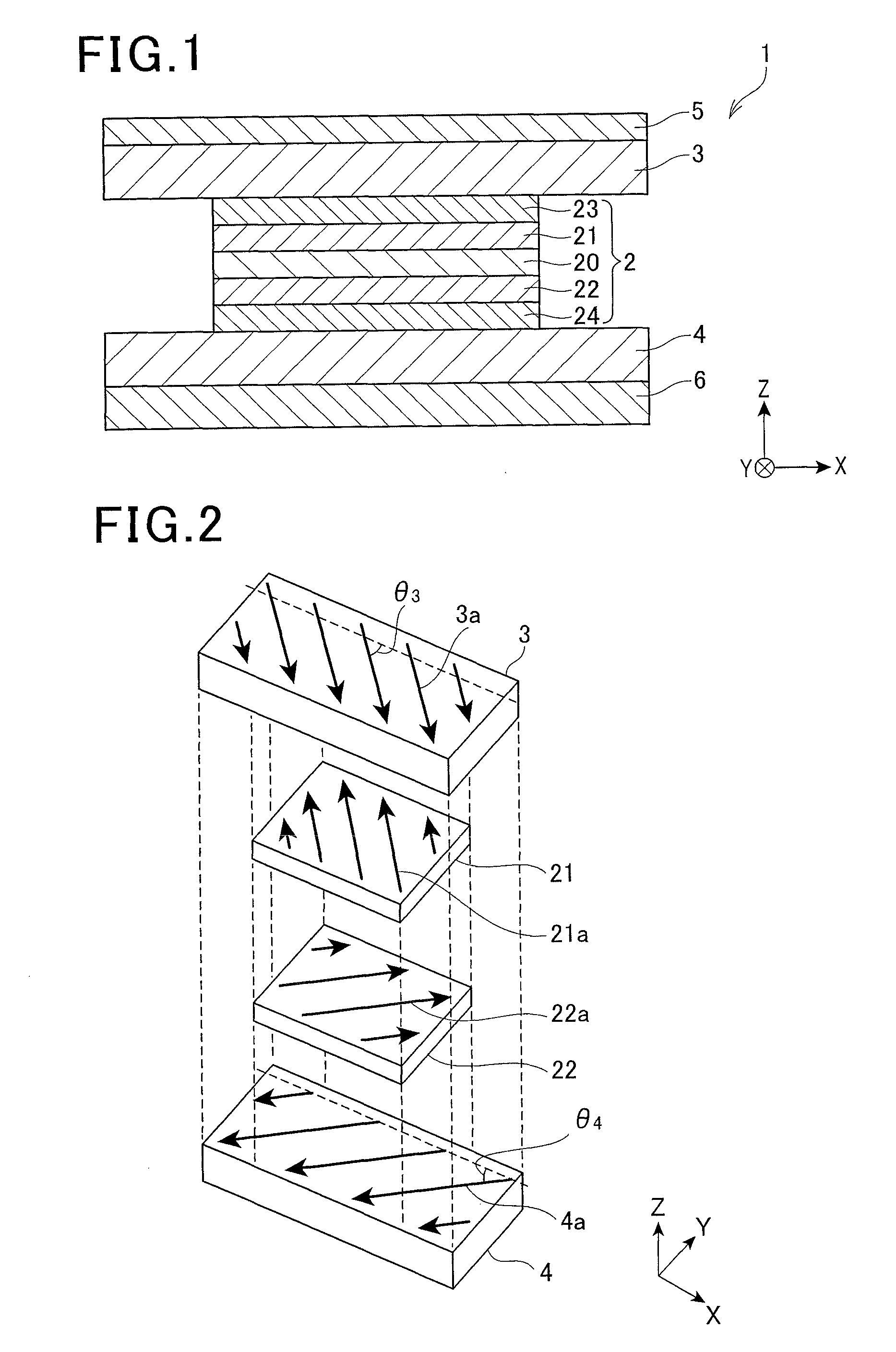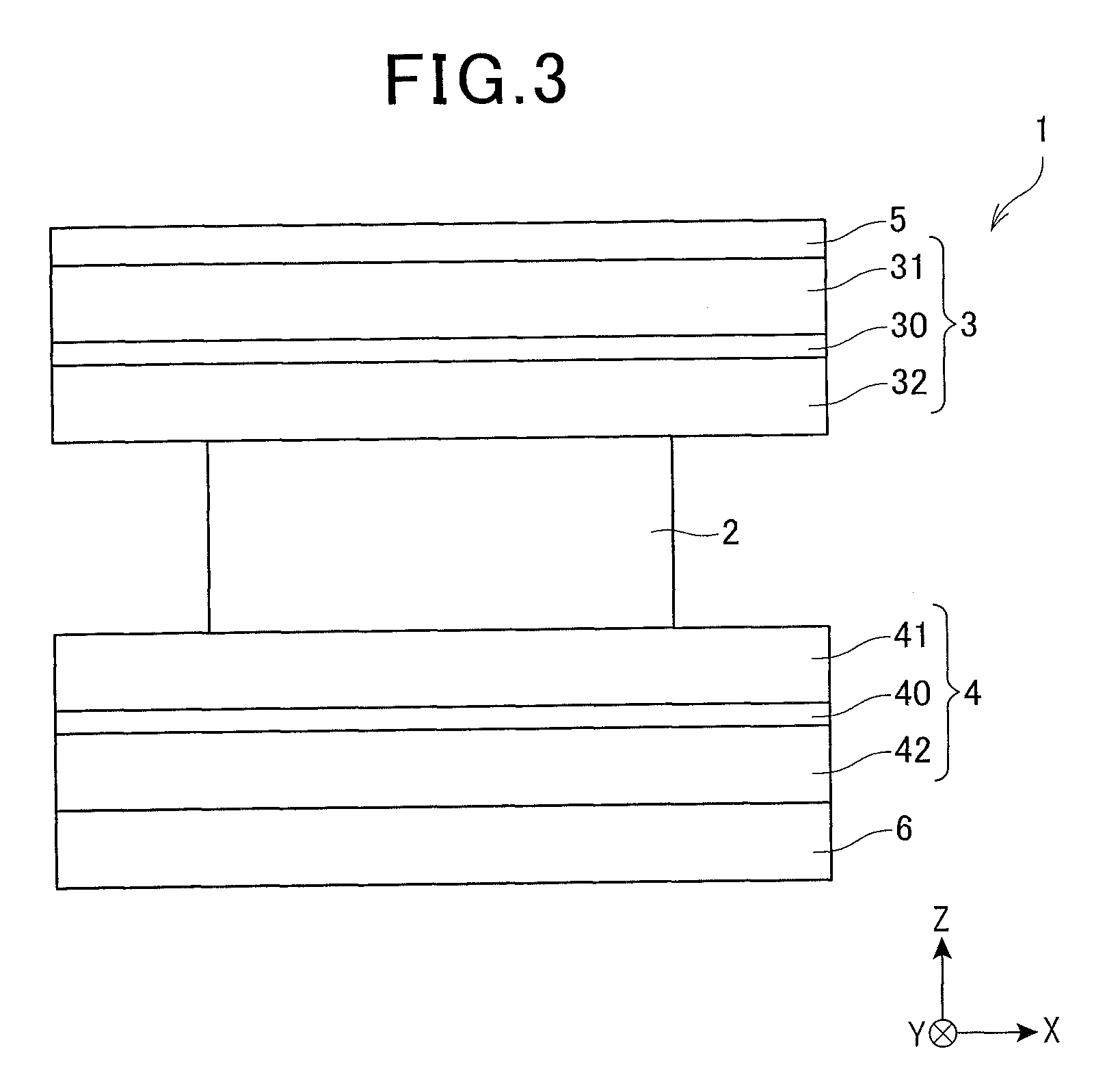CPP-type magnetoresistance effect element and magnetic disk device
a magnetoresistance effect and magnetic disk technology, applied in the field of cpp-type magnetoresistance effect elements and magnetic disk devices, can solve the problems of difficult to generate a strong exchange coupling between the two ferromagnetic layers, limited operation current, and reduced heat dissipation efficiency, so as to prevent deterioration, improve linear recording density, and ultra-high recording density
- Summary
- Abstract
- Description
- Claims
- Application Information
AI Technical Summary
Benefits of technology
Problems solved by technology
Method used
Image
Examples
experimental example 1
[0161]A magnetoresistive effect element (Example 1) having a configuration as illustrated in FIGS. 1, 2, 4A, 4B and 6 was fabricated.
[0162]That is, as illustrated in the following Table 1, on top of a second antiferromagnetic layer 6 that was made of IrMn, a lower shield layer 4 that was made of NiFe and had a thickness of 125 {acute over (Å)} is formed. On top of this lower shield layer 4, an MR part 2 that had a lamination configuration as illustrated in Table 1 was formed. The thickness of the second antiferromagnetic layer 6 was 100 {acute over (Å)} so that the blocking temperature (Tb6) of the second antiferromagnetic layer 6 was 270° C.
[0163]Then, with respect to the multilayer body that included the second antiferromagnetic layer 6, the lower shield layer 4 and the MR part 2, a first annealing treatment (see FIG. 11A) was performed in which, while a magnetic field (3 kOe) was applied in a direction of a predetermined angle θ4, heating was performed at a temperature (280° C.) ...
experimental example 2
[0169]A magnetoresistive effect element (Example 2) having a configuration as illustrated in FIGS. 2, 3, 4A, 4B and 6 was fabricated.
[0170]That is, as illustrated in the following Table 2, on top of a second antiferromagnetic layer 6 that is made of IrMn, a lower shield layer 4 was formed in which a second lower shield layer 42 that was made of NiFe and had a thickness of 125 {acute over (Å)}, a lower nonmagnetic layer 40 that was made of Ru and a first lower shield layer 41 that was made of NiFe and has a thickness of 125 {acute over (Å)} were laminated in this order. On top of the lower shield layer 4 (on top of the first lower shield layer 41), an MR part 2 that had a lamination configuration as illustrated in Table 2 was formed. The thickness of the second antiferromagnetic layer 6 was 100 {acute over (Å)} so that the blocking temperature (Tb6) of the second antiferromagnetic layer 6 was 270° C.
[0171]Then, with respect to the multilayer body that included the second antiferromag...
experimental example 3
[0177]A spin stand on which a magnetic head was mounted was used to evaluate recording and reproducing characteristics (R / W characteristics). As the magnetic head, a combination of a single magnetic pole head that had a recording track width of 60 nm and a MR head that contained the magnetoresistive effect element of the above Example 1 and Example 2 and had a reproducing track width of 40 nm was used.
[0178]Measurement wasperformed at a condition that a disk was rotated at 5400 rpm at a constant position of a radius position of 22.3 mm.
[0179]As a medium SNR, a value of a signal-to-noise ratio (S / Nm) of a differential waveform after passing through a differentiating circuit was evaluated. Here, S was an output at 299 kfci, and Nm was a RMS (Root Mean Square) value at 793 kfci. Further, a track average signal amplitude (TAA: Track Average Amplitude) at 299 kfci was evaluated.
[0180]The results are illustrated in Table 3.
[0181]
TABLE 3TAA (mV)S / Nm (dB)Example 12.714.7Example 22.616.3
[018...
PUM
| Property | Measurement | Unit |
|---|---|---|
| total thickness | aaaaa | aaaaa |
| thickness | aaaaa | aaaaa |
| thickness | aaaaa | aaaaa |
Abstract
Description
Claims
Application Information
 Login to View More
Login to View More - R&D
- Intellectual Property
- Life Sciences
- Materials
- Tech Scout
- Unparalleled Data Quality
- Higher Quality Content
- 60% Fewer Hallucinations
Browse by: Latest US Patents, China's latest patents, Technical Efficacy Thesaurus, Application Domain, Technology Topic, Popular Technical Reports.
© 2025 PatSnap. All rights reserved.Legal|Privacy policy|Modern Slavery Act Transparency Statement|Sitemap|About US| Contact US: help@patsnap.com



